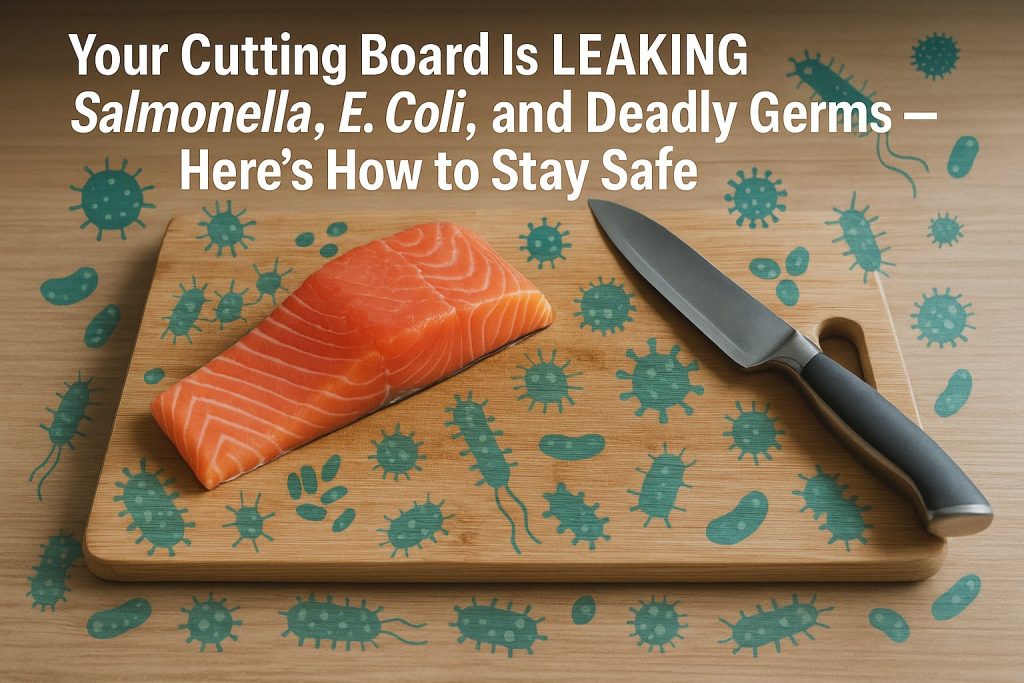Your Cutting Board Is LEAKING Salmonella, E. Coli, and Deadly Germs — Here’s How to Stay Safe

It’s one of the most used tools in your kitchen — but also one of the most dangerous. Your cutting board could be hiding harmful bacteria like Salmonella, E. Coli, and Listeria, especially if it’s used improperly or rarely sanitized. This article uncovers the hidden risks of cutting boards and how to protect your health through simple yet essential habits.
Why Cutting Boards Are Bacteria Magnets
- Porous materials (like wood) can trap moisture and bacteria deep within the fibers.
- Knife grooves create perfect hiding spots for microbes.
- Cross-contamination happens when raw meat, vegetables, and cooked foods share the same surface.
According to the USDA, even a quick rinse isn’t enough to remove pathogens like Salmonella from cutting boards.
Shocking Facts About Your Cutting Board
- A cutting board can have more bacteria than your toilet seat.
- Plastic boards with deep cuts harbor E. coli just as easily as wooden ones.
- Most foodborne illnesses at home are traced back to poor surface hygiene.
- 1 in 3 people never sanitize their boards properly.
Safe Cutting Board Practices
✅ DO:
- Use separate boards for raw meats, vegetables, and ready-to-eat foods.
- Disinfect regularly with hot water + vinegar or a diluted bleach solution.
- Replace plastic cutting boards once grooves become too deep to clean.
- Dry boards upright in open air, not in a drawer.
❌ DON’T:
- Use the same board for chicken and salad without cleaning.
- Leave boards wet or stacked.
- Just rinse with cold water and call it “clean.”
- Use dish soap only — many bacteria survive that.
Best Materials for Food Safety
| Material | Pros | Cons |
|---|---|---|
| Plastic | Dishwasher-safe, affordable | Grooves easily, harbors bacteria |
| Wood (Maple/Bamboo) | Naturally antimicrobial | Needs air drying, harder to sanitize |
| Composite (Epicurean-type) | Durable, knife-friendly | Can be expensive |
| Glass | Easy to sanitize | Bad for knives, slippery |
Pro tip: Use color-coded cutting boards to prevent cross-contamination.
Natural Disinfection DIY Spray
Mix in a spray bottle:
- 1 cup white vinegar
- 1 tbsp baking soda
- Juice of 1 lemon
- 5 drops of tea tree or thyme essential oil
Spray, let sit 5–10 min, scrub with a brush, then rinse and dry.
Conclusion
Your cutting board can either support your health — or silently endanger it. By adopting hygienic practices and replacing damaged boards, you prevent foodborne illness and protect your family. Treat your cutting board like a tool for health, not a threat in disguise.




